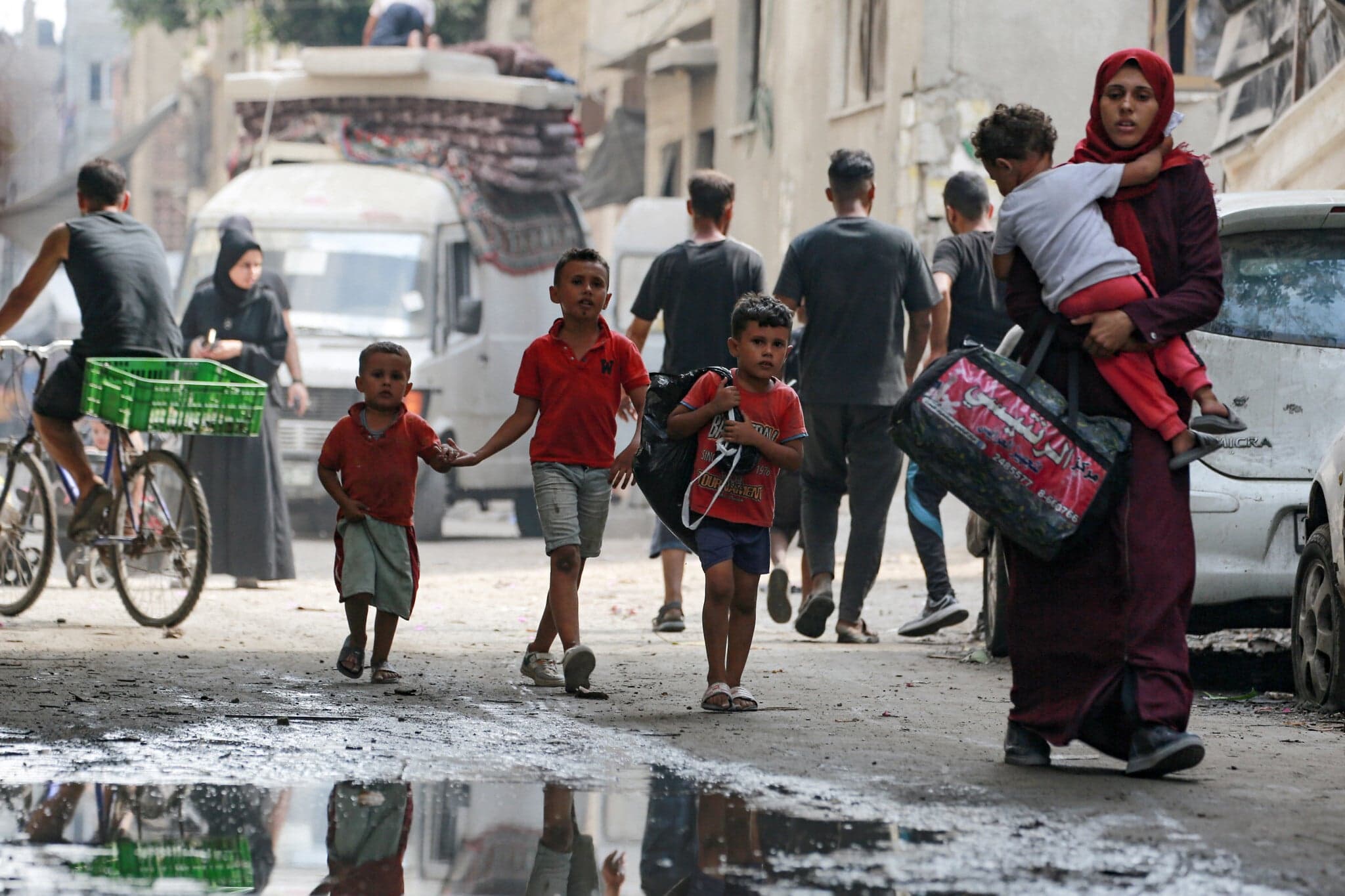A global hunger monitor declared for the first time on Friday that famine has struck the densely populated northern Gaza Strip, some 22 months after the outbreak of war in the enclave following the deadly Hamas invasion of Israel on October 7, 2023.
The charge was swiftly denied by Israel, with the Coordinator for Government Activities in the Territories, the Defense Ministry body that oversees aid, accusing the Integrated Food Security Phase Classification (IPC) system of basing its report on “biased and self-interested sources originating from Hamas.”
The report, released alongside a four-page summary, came as Israel ramps up its preparations for a takeover of Gaza City, days after Hamas said it would accept a phased hostage-ceasefire proposal and Israel said it would send representatives to negotiate for the release of all the hostages in exchange for an acceptable end to the war.
In its response to the report, COGAT said the IPC declined to include information provided to it by Israel, and that the hunger monitor ignored a swift uptick in aid deliveries in the last several weeks.
“It is illogical to suggest that conditions will worsen when improvements are already evident on the ground,” the Israeli agency said.
According to the IPC report, an estimated 514,000 people — or nearly a quarter of Gaza’s population — are experiencing famine, and that number is expected to rise to 641,000 by the end of September.
Some 280,000 of those people are in a northern region covering Gaza City — known as Gaza governorate — which the IPC says is in famine, its first such determination in the enclave. The rest are in Deir al-Balah and Khan Younis, central and southern areas where the IPC projects will be in a state of famine by the end of next month.
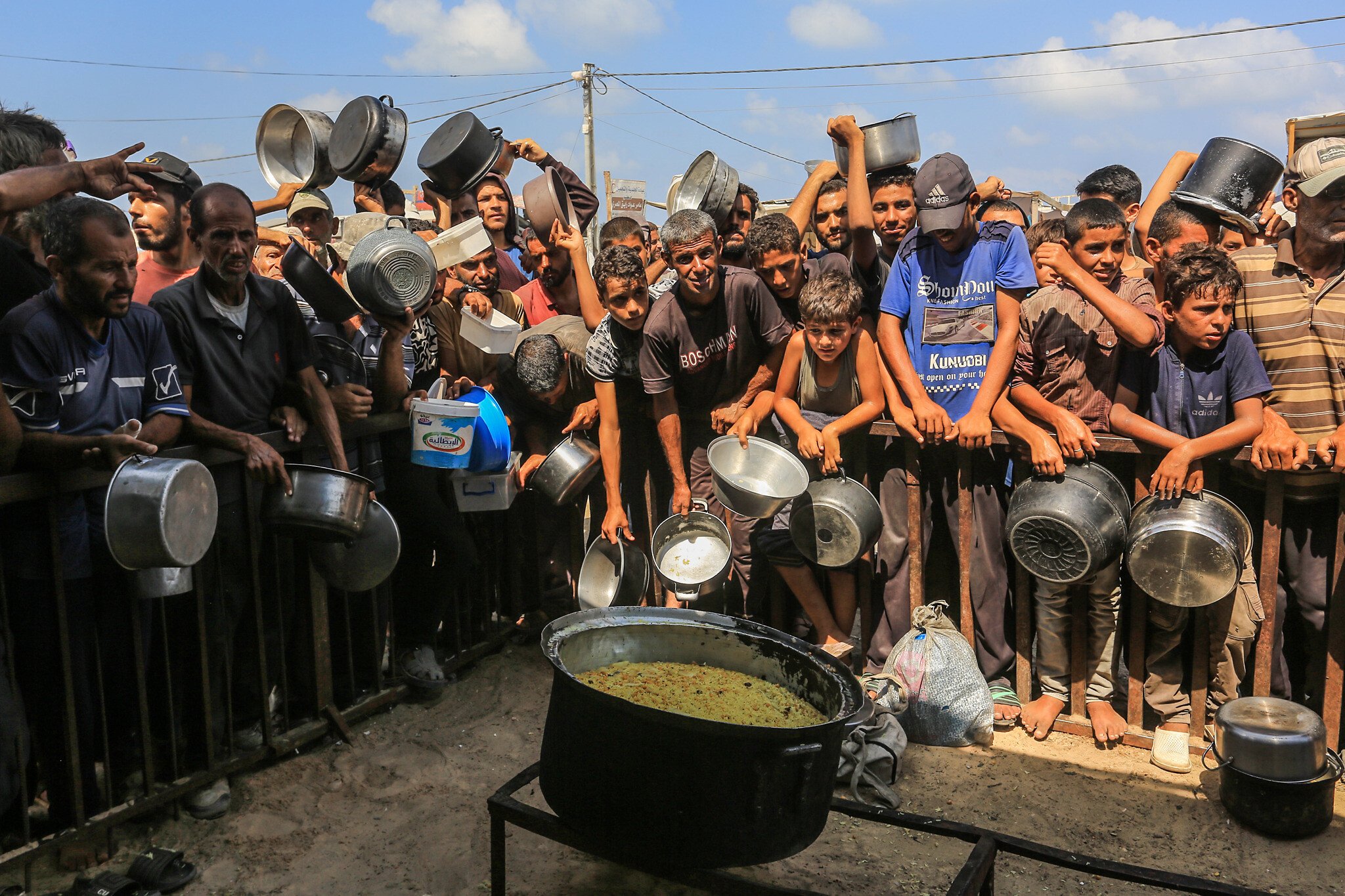
More than half a million people in Gaza, about a quarter of the population, face catastrophic levels of hunger, and many are at risk of dying from malnutrition-related causes, the IPC report said.
Last month, the IPC said the “worst-case scenario of famine” was unfolding in Gaza, but stopped short of an official determination.
For a region to be classified as in a famine, at least 20 percent of people must be suffering extreme food shortages, with one in three children acutely malnourished and two people out of every 10,000 dying daily from starvation or malnutrition and disease.
Even if a region has not yet been classified as “in famine” because those thresholds have not been met, the IPC can determine that households there are suffering famine conditions, which it describes as starvation, destitution and death.
According to the hunger monitor, Israel’s total blockade on aid from early March to mid-May — which Jerusalem instituted after the collapse of a ceasefire with Hamas, amid negotiations for further hostage releases — was followed by “critically low volumes through July” and “coupled with the collapse of local food production,” leading to “extreme food shortages.”
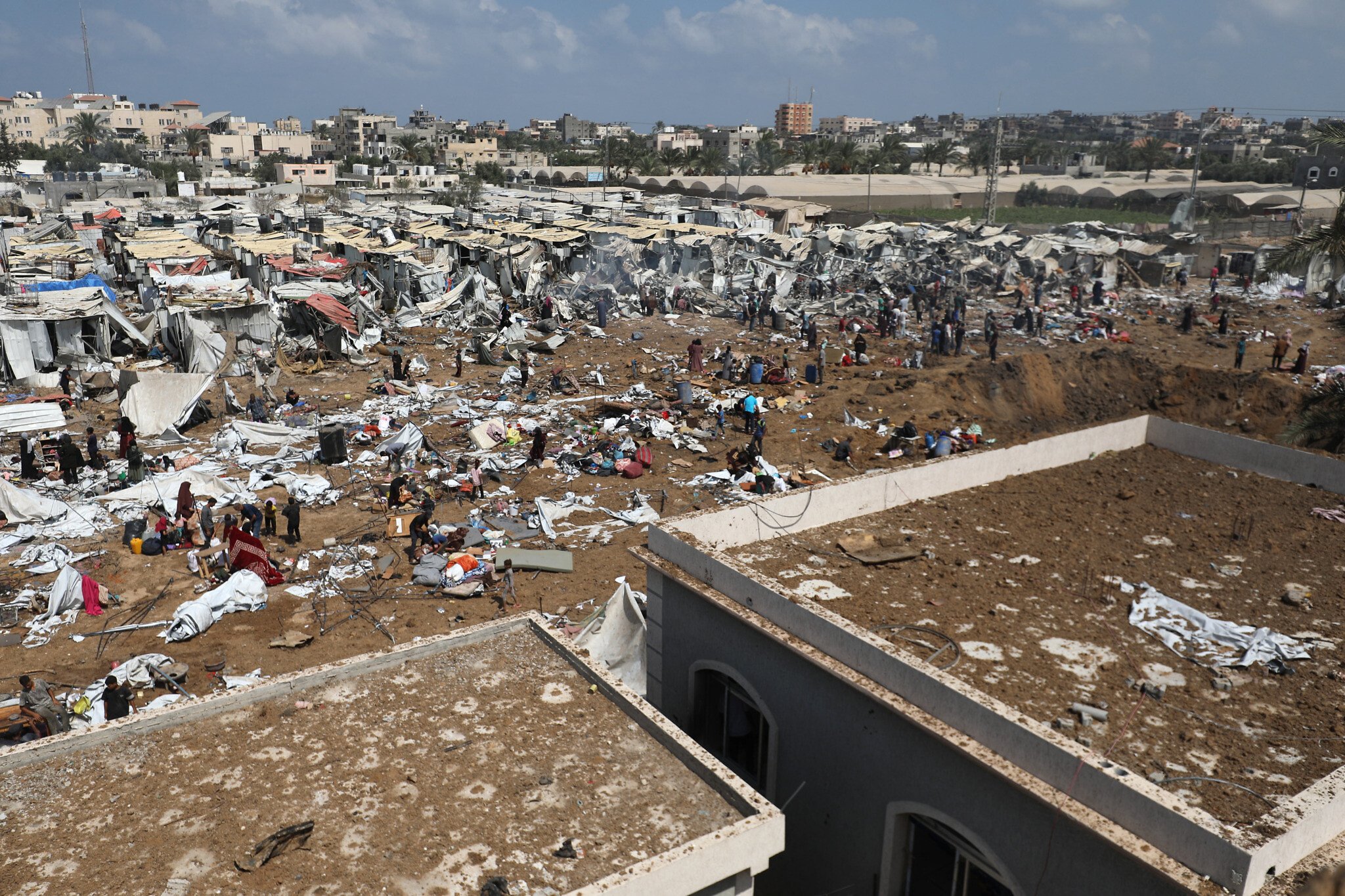
Israel resumed the supply of aid in May, but the flow remained well below what it had been prior to the blockade; it was only in July, after reports of imminent famine and viral photos of emaciated children — some of whom it was later revealed suffered from chronic health conditions — that Israel announced a series of actions to boost the flow of aid into Gaza, while denying there was starvation in the enclave.
UN warns of war crimes; Israel says report is ‘fabricated’
Minutes after the report was released, UN rights chief Volker Turk said “it is a war crime to use starvation as a method of warfare,” noting the deaths “may also amount to the war crime of willful killing.”
UN Secretary-General Antonio Guterres said: “We cannot allow this situation to continue with impunity.” He also called for “an immediate ceasefire, the immediate release of all hostages, and full, unfettered humanitarian access.”
UN emergency coordinator Tom Fletcher urged people to read the report, “cover to cover, in sorrow and in anger,” calling it “irrefutable testimony” of “a famine we could have prevented.”
Fletcher made headlines in May when he told a BBC reporter that some 14,000 babies in Gaza could die in the next 48 hours if aid does not reach them in time, citing a previous IPC report.
In fact, according to that report, not all of the 14,000 children were babies, they were not all expected to die, and — most notably — this was predicted to happen over the course of a full year, not 48 hours, if aid wasn’t allowed into Gaza.
"It is a famine we could have prevented"
UN emergency coordinator Tom Fletcher says people should read the IPC report "in sorrow and in anger".https://t.co/be5yhQF4lI
???? Sky 501, Virgin 602, Freeview 233 and YouTube
The Foreign Ministry, meanwhile, said the report was “tailor-made” and “fabricated,” accusing the IPC of having changed its own standards, cutting the number of acute malnutrition cases it requires for a famine determination by half.
“The entire IPC document is based on Hamas lies laundered through organizations with vested interests. There is no famine in Gaza,” the ministry added, saying it “will be thrown into the despicable trash bin of political documents.”
COGAT: IPC used partial data, ignored recent changes
COGAT, which coordinates humanitarian affairs in the Gaza Strip, issued a counter-report refuting the contents of the IPC brief and accusing it of ignoring recent policy changes to reverse the trend in the Strip.
“Instead of providing a professional, neutral and responsible assessment, the report adopts a biased approach riddled with severe methodological flaws, thereby undermining its credibility and the trust the international community can place in it,” fumed COGAT chief Maj. Gen. Ghassan Alian.
According to the COGAT counter-report, the IPC’s warning “is false and relies on partial, biased data and superficial information originating from Hamas.” The IPC, COGAT charged, “chose to ignore the information provided to Israel and preferred to stick with incomplete and misleading information.”
Both the Foreign Ministry and COGAT asserted that people look, instead, to food prices in Gaza’s markets as evidence that there is not a severe shortage. Prices have “plummeted” in recent weeks, they said, with COGAT publishing an infographic purporting to show current rates.
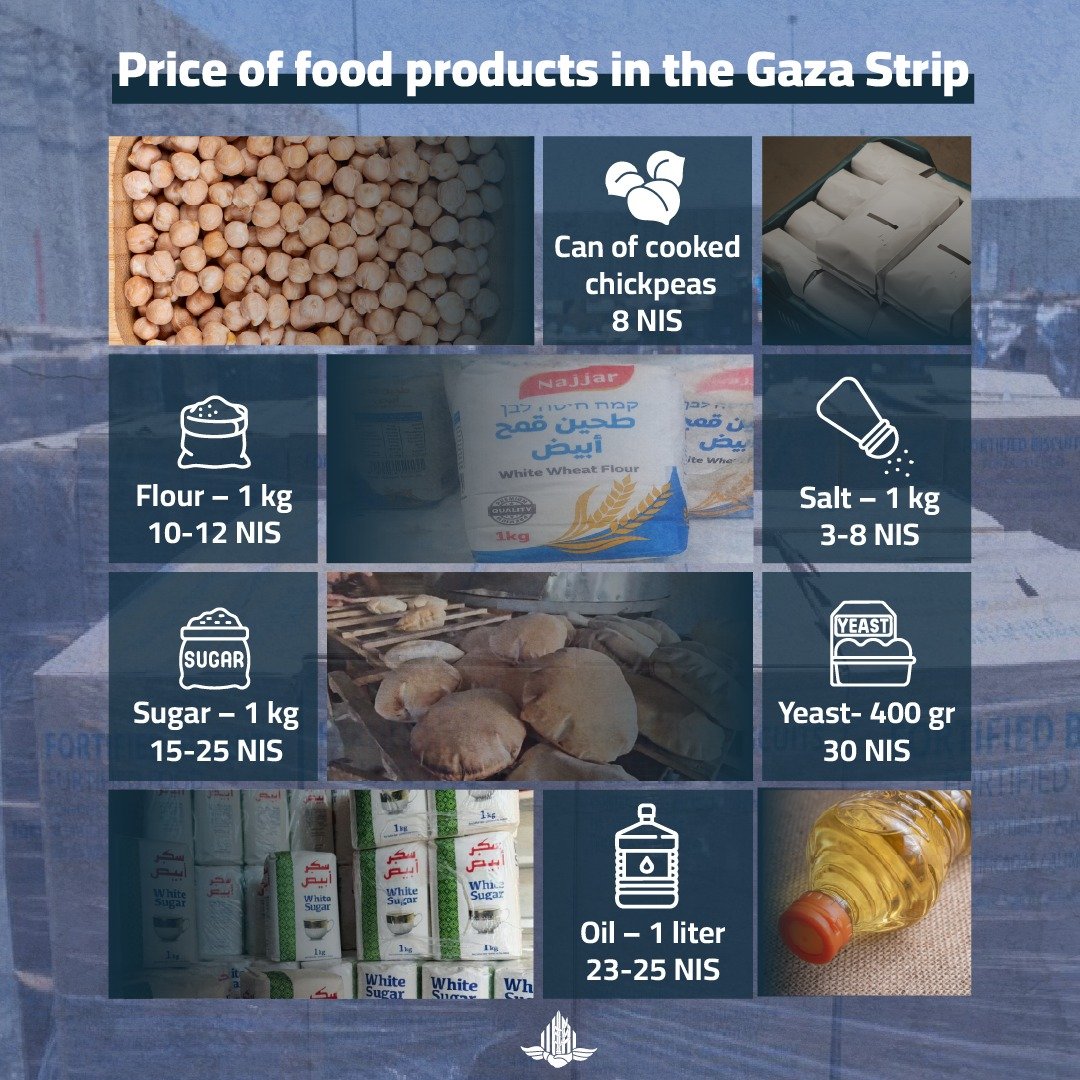
The defense ministry body charged that IPC’s data-collection methods are unreliable and partially based on assessments made by UNRWA workers in the Gaza Strip — “some of whose employees are Hamas operatives.”
According to the IPC, its acute food insecurity analysis was conducted from July 30 to August 4, based on computer-assisted telephone interviews, “supplemented by trends in food consumption indicators.”
More than half of respondents said adults regularly skip meals, while a quarter reported collecting garbage to sell, and almost a third said they’d searched for food amid rubble. Its assessment of Global Acute Malnutrition (GAM) rates — a figure determined by measuring the circumference of people’s arms — was performed in the field, it said, and subjected to nutritional analysis.
COGAT: Projections are ‘illogical’ given recent progress
According to COGAT, “the report also relies heavily on other UN data, which have been established to include only partial information, as well as being biased, and include non-public internal documents, many sourced from entities linked to the Hamas-controlled Gaza health ministry.”
COGAT also charged that the report “disregards the fact that in recent weeks we have advanced significant efforts and that the overall trend has shifted. Despite this progress, it still predicts that the situation will deteriorate further. It is illogical to suggest that conditions will worsen when improvements are already evident on the ground.”
In late July, Israel announced daily, 10-hour pauses in fighting in certain densely populated swaths of Gaza to facilitate more aid flow, and opened new corridors for aid distribution; it also allowed and participated in a wave of airdrops, though this method delivers far less aid than can be carried into the Strip by land.
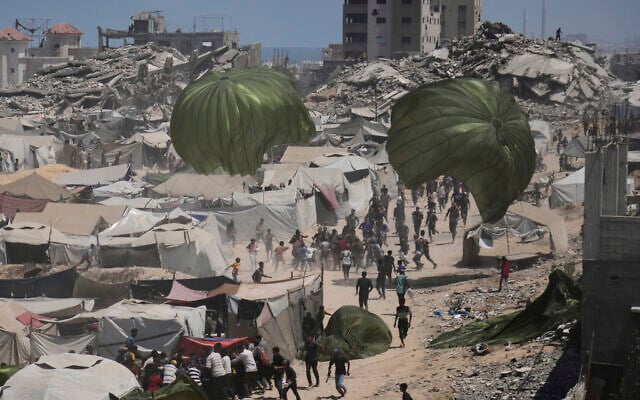
The IPC did cite, and it did not dispute, COGAT’s report that 55,600 metric tons of food entered Gaza in the first half of August, and in its projections it said it had incorporated developments through August 15; however, the monitor asserted that the current flow of aid “ remains largely insufficient to offset the prolonged deficits.”
Monitor: GHF ‘marked by insecurity and stark disparities’
The IPC report criticized the Gaza Humanitarian Foundation, a US- and Israel-backed group launched in May that is meant to distribute aid while preventing its diversion to Hamas.
The project has been widely rejected by the UN and international groups, who accuse it of violating principles of neutrality; it has also seen regular mass-casualty incidents — with more than 1,000 people killed, according to the UN, a figure disputed by Israel — amid chaotic scenes at and on the way to aid sites.
The GHF sites “have been marked by insecurity and stark disparities in coverage and access,” the IPC said, explaining that they require “walking long distances and [that] distributions operate on a first-come-first-serve basis, resulting in highly inequitable access.” The report also noted that much of the food packages “require extensive preparation to make them digestible for humans.”
The IPC noted that, amid UN aid deliveries, the vast majority of trucks — some 87% — do not make it to their destinations. Israel accuses Hamas of looting aid, and blames the UN for failing to distribute it successfully; the UN has said the trucks are mostly intercepted by hungry Gazans unaffiliated with Hamas.

